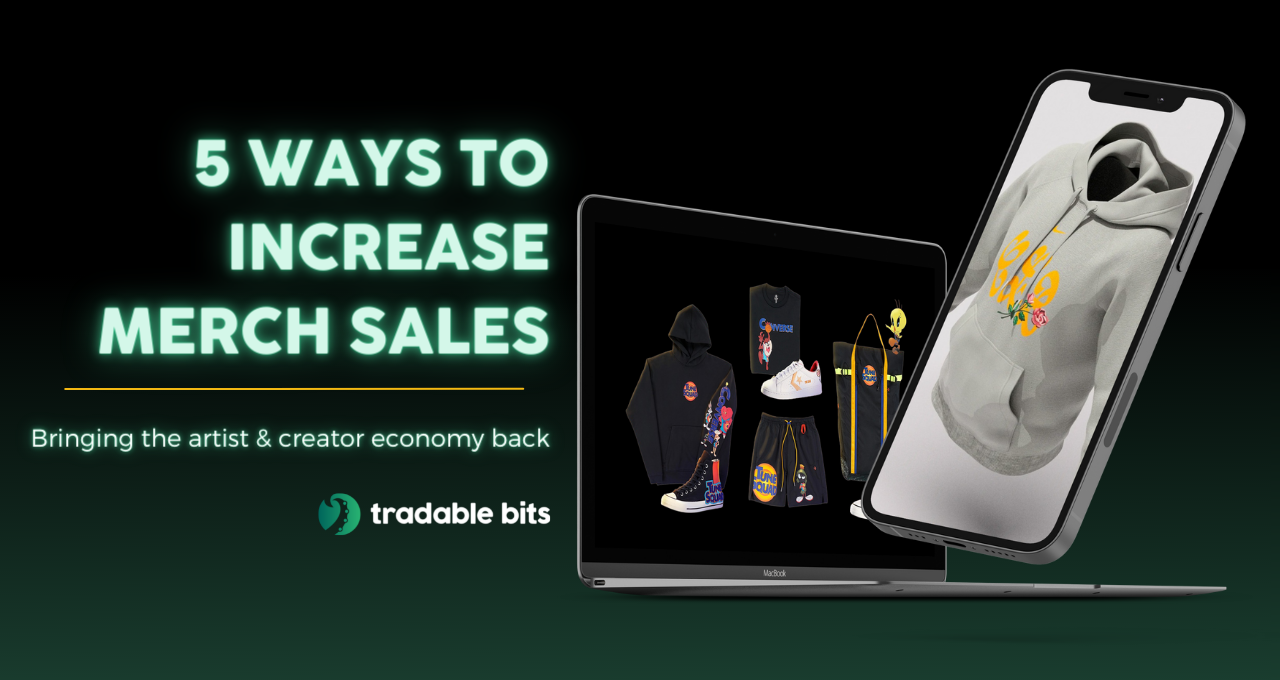The lull in live events over the last 2 years has transformed the way artists interact with their fans - putting more pressure on artists to find hybrid mediums of engagement and new revenue streams. This shift has brought forth more focus on the artist & creator economy, which looks to put money back in the hands of the creators.
This movement presents artists and creators with opportunities to explore new boundaries of engagement and new revenue models. From virtual assets to returning ticket sales, the sky's the limit! As part of these opportunities, merchandising continues to be a great revenue driver for artists and creators alike. However, to stand out in an oversaturated market of brands vying for attention, brands will need a solid merchandise strategy.
Here are 5 ways you can increase your merch sales:
1. Integrate Your Digital Advertising Strategy
Data, it’s important. It drives informed decision-making, and it’s the foundation of an effective & flexible strategy. This is especially true when it comes to your merchandising infrastructure. Understanding how to use data-driven insights to answer questions such as “what is the best performing item, and why,” is an essential component of improving your merchandising strategy. Utilize the tools you have at your disposal to optimize your digital advertising strategy, such as pixels and dynamic ads.
Pixels:
The Facebook Pixel is a piece of code placed on your website that collects data that helps track conversions from Facebook ads. It also optimizes those ads, builds audiences, and remarkets accordingly. These pixels can offer greater insights when integrated with Google Tags Manager (GTM), attributing audiences and sources that drive conversions. Use pixels to quantify your performance across different channels, and build more effective campaigns moving forwards.
Dynamic Ads and Remarketing:
Dynamic remarketing is the process of personalizing your marketing efforts. This is what enables your ads to show specific products visitors showed interest in, or promote products that go well with their prior purchases. By personalizing your messaging and merchandise, fans are more likely to stay engaged and follow through on a purchase.
Here are some general best practices to consider when using dynamic ads:
- Use your google analytics account
- Set up A/B testing to test your layouts
- Carefully select your audience groups
- Set a frequency cap so you don't spam your fans
- Put effort into your product images
In addition to dynamic remarketing, also consider dynamic prospecting. For example, within the Tradable Bits platform, you can identify intelligent audiences from fans who have already interacted with your campaign. This allows you to extend your reach to new fans that are likely to convert, and therefore improve your merchandise sales.
Friends Experience Chicago:
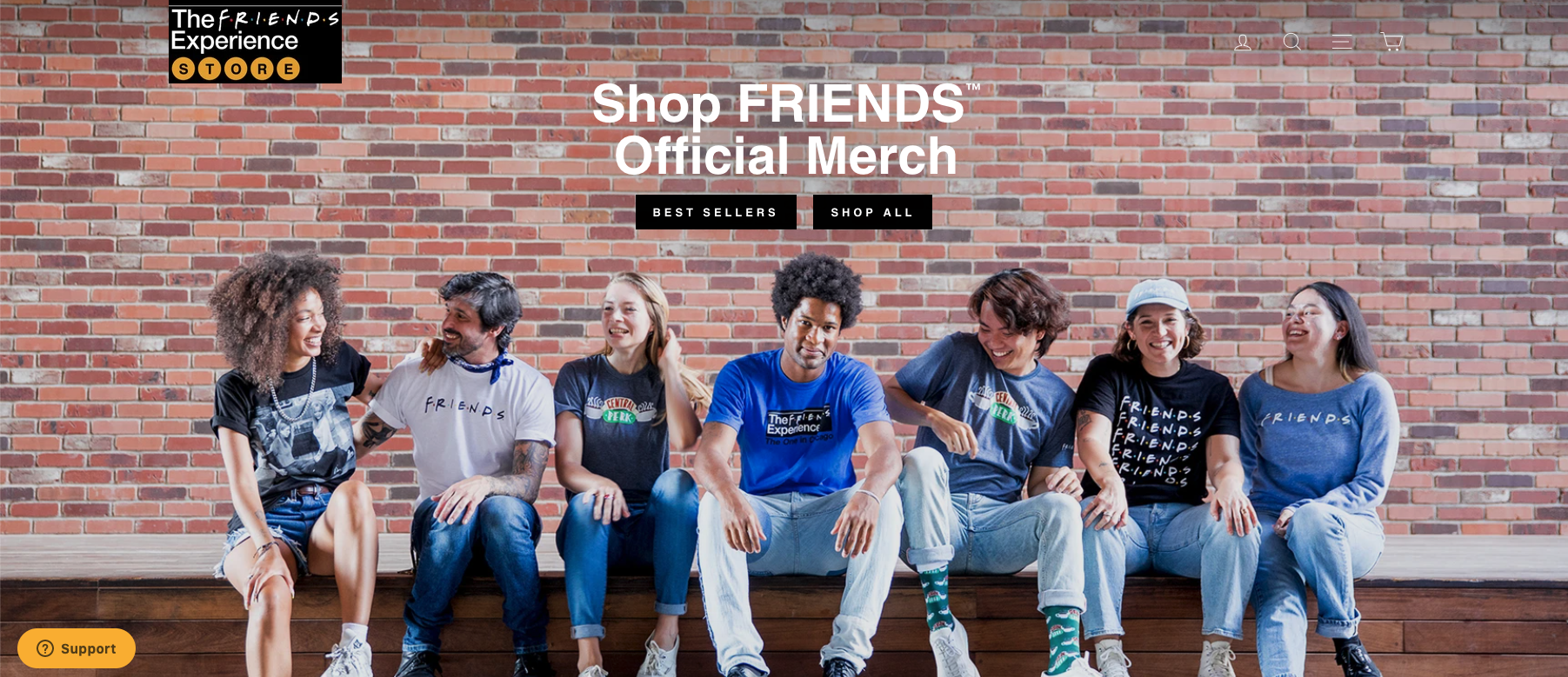
The Friends Chicago Experience is a classic example of a brand that has been using dynamic remarketing & prospecting to drive traffic to their merch website and drive ticket sales. This strategy is multifaceted:
They feature their most popular products with regular ads, which drives traffic to their site, allowing them to target prospective customers.
They narrow down their prospective customers and retarget with dynamic ads. These intelligent ads target their lower funnel customers to drive purchases.
Beyond merch conversions, this advertising strategy also had an interesting impact on their ticket sales as well - driving a 45X ROI. Their merch advertisements were successful in driving more “Frienatics” to buy tickets to the Chicago experience itself, and is a great example of how merchandise can be used as advertising in and of itself!.
2. Accessibility + Usability.
The phrase “the customer always comes first” often comes up when brands find ways to innovate & improve. As an artist, this runs true as well. Your fans do come first, and as you grow it is important to keep them in mind. Apart from communicating your merch to fans effectively, making it easier for them to access is key.
Ensure you merch website is user friendly:
It’s essential that your merch website is user-friendly and appealing. In fact, a study published in the Journal of Business Research found that website design features have a sizable impact on conversion. Reinforcing your message with a seamless experience on your website is essential to increased conversions and merch sales. After all, we live in a world where people have come to expect an easy user experience and aesthetic design.
Use your Channels:
From Tiktok, Instagram & Youtube, to Discord and other forums, it’s a no-brainer that communicating with your fans on different platforms leads to a more diverse and expansive digital channel strategy. Use those channels to promote your merch across social platforms like Instagram Shops, Facebook Marketplace, or even your own ecommerce store.
Spotify x Shopify:
Stay ahead of the curve by experimenting with exciting integrations. Spotify’s recent partnership with Shopify is case-in-point. Using this integration, artists can now showcase their merchandise on their Spotify profile, giving them better visibility (and fans better accessibility) to their products. Stay on the lookout for more tech integrations that lower barriers for all creators.
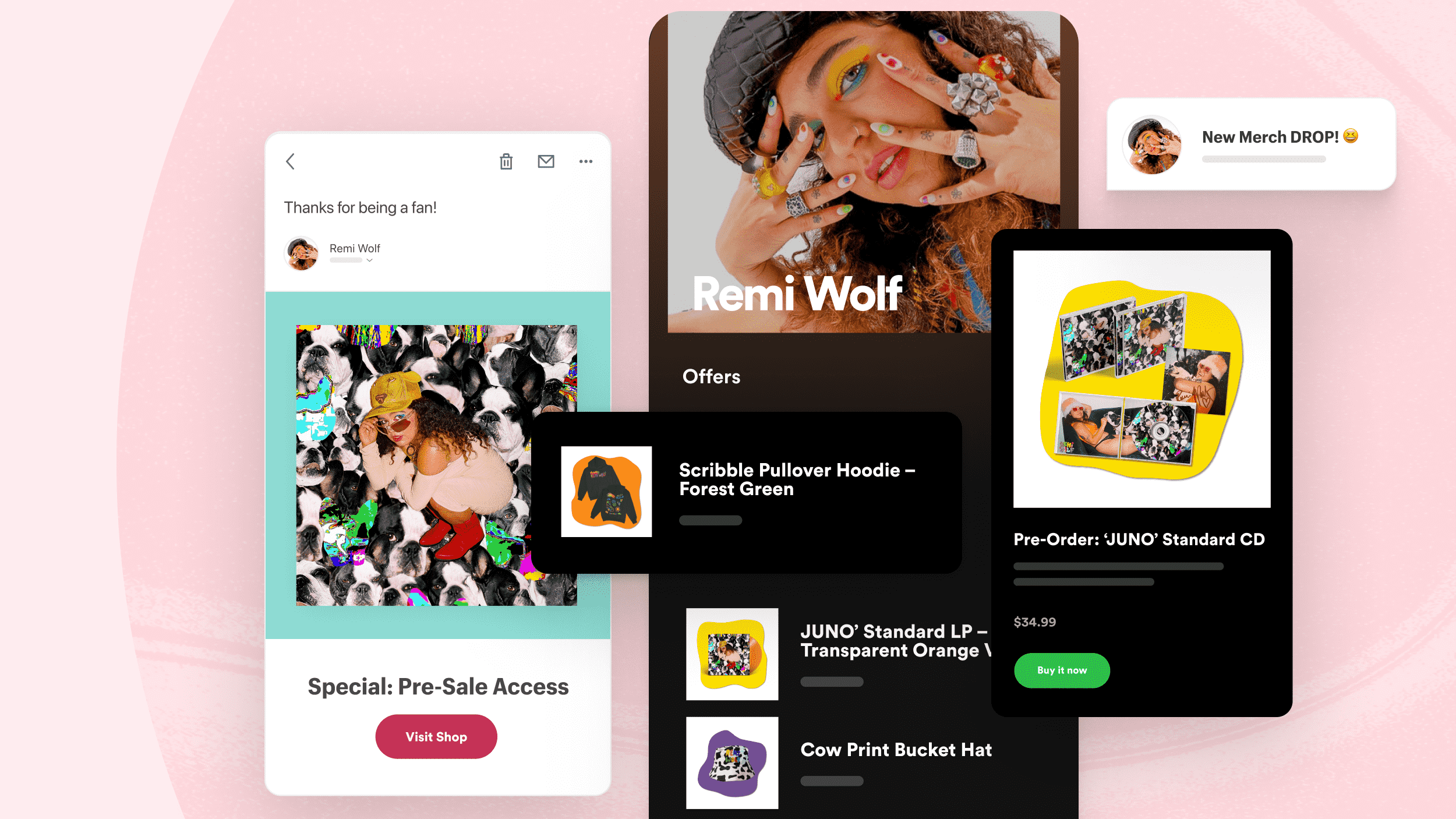
3. Quality vs Quantity:
The lifelong argument makes its way into the music & merchandise industry with many artists favoring mass-producing merch because of the vast fan bases they have, or how cost-effective it can be. However, that isn’t always the case.
Smaller creators and artists can reap the rewards of “less is more” with uniquely branded and interesting products tailored to their tight-knit community. Fans want to be a part of a community that “sets them apart.” A uniform or product set is a simple way for them to self-identify, and feel more connected to this community. Simply put, being unique sells.
Storytelling:
Storytelling is a powerful tool to connect with fans on a more personal relatable level. As an artist or creator, you likely already have a story or mantra that defines who you are and why fans follow you - extend this story to your overarching brand. This can be as simple as defining a key slogan for your tees, or as complex as tying in new products that would only resonate with your stans. Your fans are likely buying your products to align themselves with your brand, storytelling amplifies this connection.
Make fans feel special with direct-to-fan-marketing:
Direct to fan marketing works. Email and SMS marketing both boast effective results - with email offering $42 back for every dollar spent, and SMS having open rates as high as 98%. Fans want to be heard and acknowledged, and these marketing channels let you play into that.
As a smaller artist or creator, maintaining your relationships with fans is vital to a sustainable selling strategy. Explore using different avenues of communication like email marketing or SMS to give fans a direct line, and to super-serve your most engaged fans.
Experiment with Bundling:
Bundling can be a great way to increase value and engagement for your fans on the back of an important release. A great example of this was done by The Midnight - a synthwave band formed in 2012 that has always put fan engagement at the forefront. In collaboration with Ninja Tune, the Midnight built up a variety of campaigns centered around their ‘Monster’ album release that focused on fan interactions. This initiative included fan artwork, commissioned lyric videos, and custom merch bundles that fans loved.
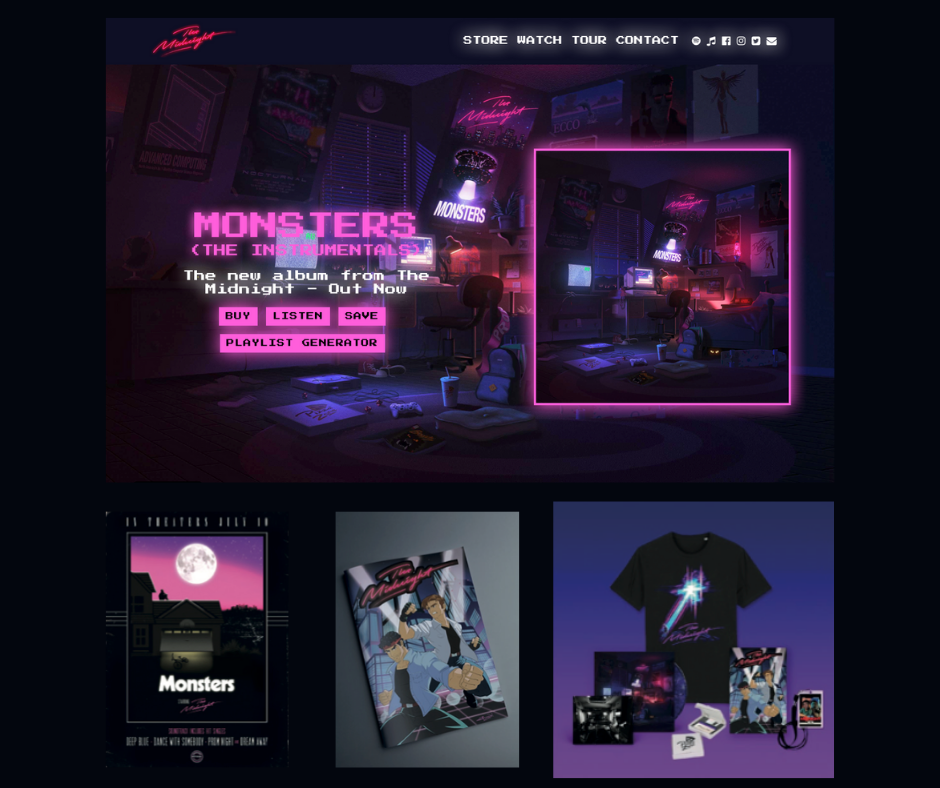
4. Create content that is Interactive & Experiential:
With all eyes online, the largest factor differentiating successful merchandise campaigns is their level of fan engagement - they capture attention and then do something with it. However, capturing fans’ attention in the first place involves balancing your audience, aesthetic, captured fan data, and a brand identity to personalize your story to fans. Then, engage your fans using content that is interactive and multisensory. For your merchandise strategy, this means finding ways to reach fans using:
Interactive Campaigns
Nitro Circus:
When you say interactive, we think Nitro Circus. Below is an example of one of the ‘personality quiz’ campaigns they ran, which they later used to inform their advertising. In this campaign, Nitro Circus asked their fans a series of questions, which would then reveal which athlete each fan was most like. What stands out with this campaign, however, is how Nitro Circus expressed athlete personality through the type of hat they would wear - effectively bridging an interactive activity with merch. Alongside this, Nitro Circus implemented an ads strategy that used the data collected by the campaign to retargeted fans with the hat they had chosen, making fans more likely to purchase.
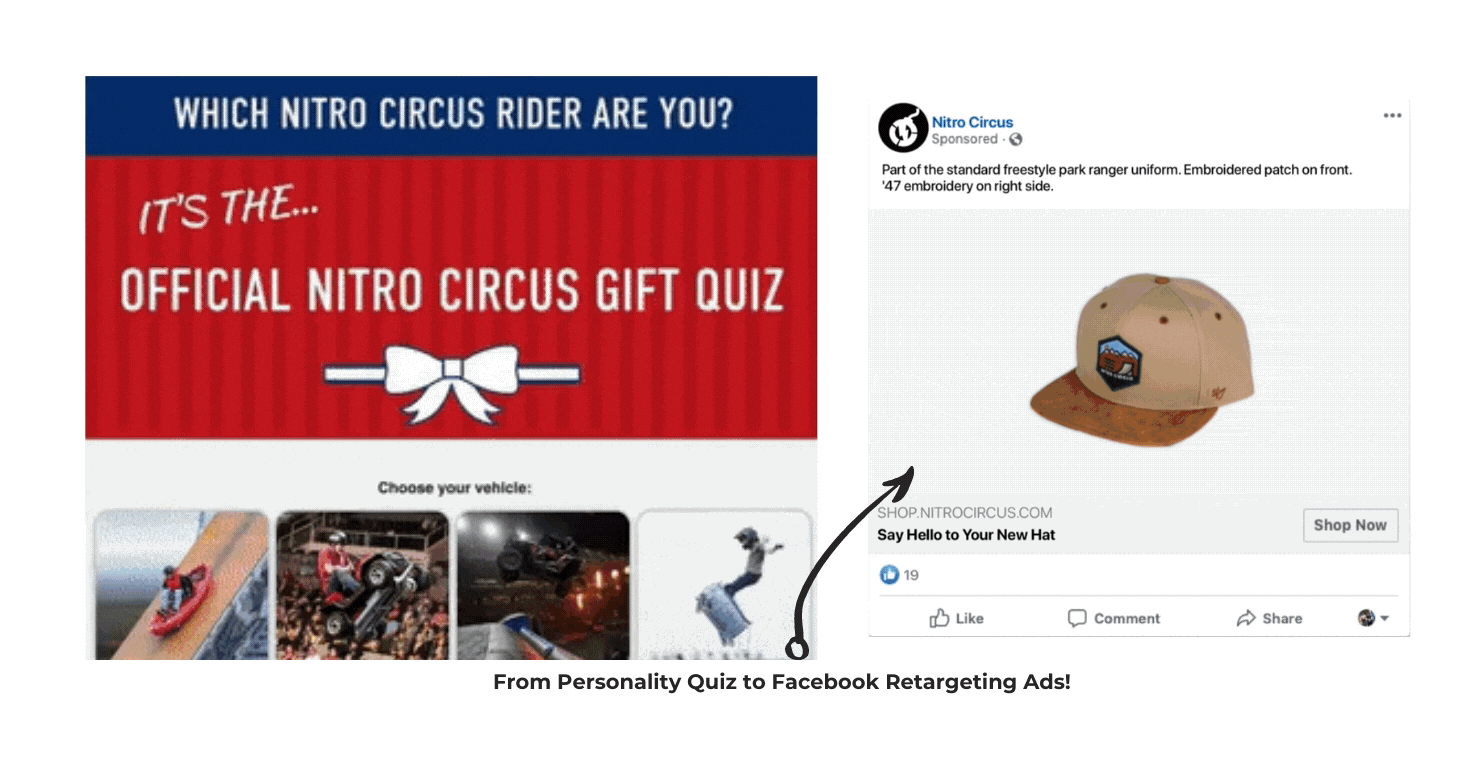
Experiential Campaigns
Peach Pit:
Even with the comeback of live music, it’s important not to alienate fans you may have made during the pandemic. Continue to find ways to reach your fans across the digital medium, whether that be through gated virtual events, live streams, or more. When exploring these mediums, merch is a great way to encourage fans to “try something new,” or to reward them for their curiosity and support.
Peach Pit and their interactive Livestream experience is an example of a brand using merch to reward loyal fans. As part of their experiment with interactive live streams, Peach Pit offered fans in attendance exclusive merch and information during their concert. Not only was this a fantastic way to let their hardcore fans show off their fandom, but they integrated a seamless purchasing platform that made it easy for any fan to “click a button and purchase” during their show.
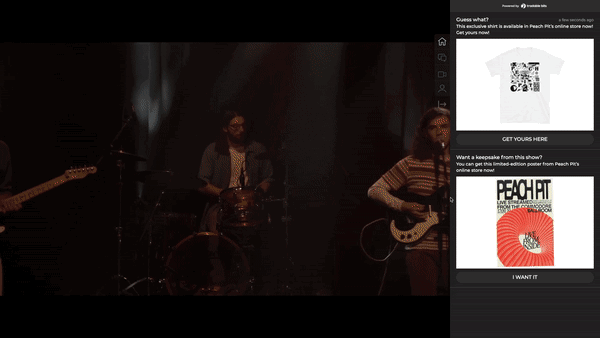
QR Codes:
One word, versatility. There are several use cases for this nifty piece of tech when it comes to your merchandise and marketing strategy:
- Awareness: Thanks to the pandemic, we’re all used to ‘scanning codes for content.’ Make use of this familiarity to promote your artist/ creator landing page with tactically placed QR codes. Whether you’re going big with billboards like Lil Nas X, or using gorilla marketing to place your QR codes in places you know your fans will visit, they’re a great way to bring more fans to your merch store.
- Community: Another way these codes can be used is to showcase a social cause, or to drive up fan involvement. A great example of this can be seen by the USL team, Forward Madison, where they integrated a QR code on their new kits. When scanned, this QR code allowed fans to buy a beer for another fan in stadium. Community involvement - check. Increased bev sales - double-check.
- Data Capture: Finally, QR codes are a great way to gain insight into who your fans are so you can target them later. If you don’t have access to your ticketing data when it comes to concerts, you can at least discover who’s in-venue by encouraging fans to scan QR codes & enter their data in exchange for concert-specific promotions.

Augmented Reality:
We love AR. Not only are AR filters a fantastic way to drive UGC across your channels, but they’re now at the point where fans can use them to interact with (and try on) merch before purchase. Whether you’re using AR as a way for fans to filter through how your merch looks on them, or as a performative art piece, it’s a fun way to interact with your fans.
Virtual Reality & the Metaverse:
Staying on the train of creativity, virtual reality and the metaverse is a key topic of today. Artists and labels are increasingly leaning into digital assets, and are experimenting with reaching fans through digital worlds. As a small artist, being involved in the latest renditions of development is key to growing and in turn, increasing your merch sales. Meet fans where they are across the spectrum of the metaverse or experiment with showcasing virtual merchandising for fans.
5. Collaborations
A great way to increase merch sales comes from partnerships that expose your brand to new fans. Collabs, when done with alignment, not only create something new for your own fans, but can really amplify your brand outwards. When we talk collabs, it’s easy to limit your perspective to the large players in the game - the BTS and McDonalds of the world - but this doesn’t have to be the case.
The Power of Small Collectives:
Smaller creators and artists have their own unique set of strengths, including a genuine and water-tight connection with their fans. This, paired with an increasing trend to “support local, and support smaller” makes crossover and collaboration with like-minded creators a fantastic opportunity. By yourself, you may reach 1000 fans, but as a collective (with similar values, brand stories, and mantras) this could increase tenfold. Working collaboratively with other creators gives your brand more momentum, and leads to a more engaged community. There’s a reason why we see so many cross-overs on Youtube channels - they work.
Key Takeaways:
- Integrate your digital advertising strategy with your merchandising goals and use your fan data
- Make the user experience seamless and experiment with integrations that increase brand visibility
- Have a community-driven approach to merchandising with storytelling, direct-to-fan marketing, and bundling campaigns
- Create interactive and experiential campaigns that get your fans’ attention but also expand your brand’s reach
- Collaborate, connect and work with brands in alignment to expose your brand to new fans and markets.
Not sure where to start with merchandise advertising? Contact us for a free consultation on how you can implement digital ads and an immersive merch experience for your fans with Tradable Bits.


